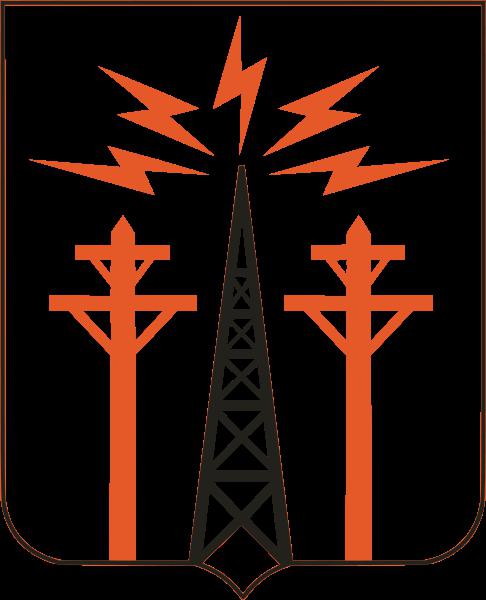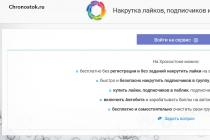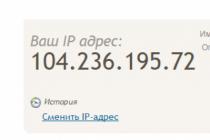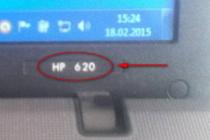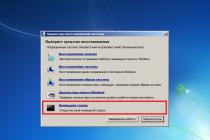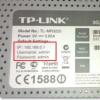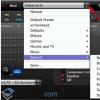Today, wireless mobile Internet from cellular operators is gaining more and more popularity in big cities. Thanks to him, each user can use the Internet and download information from the network in any part of the coverage area. Wireless Internet is also divided into different types of technologies. For example, there is the Internet of the 3G generation and the LTE generation. At the same time, LTE wireless Internet is a completely new technology today and has not yet entered tightly into our lives.
So, not everyone knows what LTE is and how to use it, as well as what significant innovations it has brought. Let's take a closer look at this new technology.
Development of mobile networks and the emergence of LTE
The first Internet on a mobile phone can be considered GPRS technology, which is also called first generation technology. However, this technology had a very low speed and a small coverage area, which made it difficult to use. Then, in 2003, EDGE technology appeared, which is considered to be the technology of the beginning of the era mobile internet.
EDGE technology is often referred to as "2G", which translates as "second generation technology". Despite the fact that the speed of such an Internet became much higher than GPRS, it was still low, and many sites had to be loaded for a long time, and about such a thing as watching a movie online, one could not even dream of.
The next stage in the development of data transmission technologies was the emergence of a third-generation wireless network, which is called "3G". Thanks to this new technology, using the Internet has become easy and the connection has become more stable. Now users of this mobile network can download websites quickly and even watch videos online, which was not possible before. This technology is quite common these days. However, it is successfully displaced by the new technology of the fourth generation.
With the development of the Internet and mobile phones, a network was needed that could transfer data over the network even faster and at the same time reduce costs. Then the developers created a fourth-generation network - "4G" or "LTE". The name translates as "long-term evolution", which hints at the long-term use of technology in the near future.
This technology has huge advantages over past generations and is actively entering our daily lives.
Characteristics of LTE technology
4G technology allows you to transfer data over a wireless mobile network at speeds up to 150 Mbps, which is currently the fastest data transfer over a mobile network. With such fast speed any user can open websites instantly and download movies very quickly in best quality. In addition, you can even watch movies in HD quality online without any problems.
The coverage area of 4G is up to 100 kilometers, which is much more than that of 3G. 4G also makes better use of the frequency range, reducing the impact of interference on the wireless network.
LTE technology was created in order to increase the data transfer rate, reduce the cost and reduce the delay in the transmission of data packets. The fourth generation network performs all these points admirably. In addition, 4G has reduced costs mobile operators 6 times compared to 3G technology, and, therefore, reduced the cost of using services for the consumer.
How can I connect to the LTE network
Almost all modern Cell phones equipped with 4G wireless network capability, but older models do not support this technology. Connecting to 4G via mobile is not difficult. All you have to do is activate the desired tariff plan at mobile operator that provides this service. However, it is important to remember that 4G network coverage may not be everywhere today. Basically, the coverage area is located in the central areas of metropolitan areas. However, this will change in the future.
To connect 4G on your phone and tablet, you will need a special SIM card, which can be bought at the offices of a mobile operator. In addition, a laptop will also need a usb modem or router through which data will be transferred to a laptop or computer. A router or modem is also bought in cellular stores.
After purchasing the necessary equipment, it remains only to choose the appropriate tariff. All information on tariff plans can always be viewed on the website of the mobile operator or clarified in the communication stores where you purchase a modem or router.
You can also search for useful information in our section.
Wireless communications today, without exaggeration, is one of the fastest growing industries.
New technical and technological solutions appear literally every year, and what last year was a novelty and the pinnacle of technical progress, today often turns out to be a necessity for every user. One of these innovations, the value of which has not yet been appreciated by all users, is LTE technology.
We are all in recent times repeatedly encountered letters LTE in advertisements for modern systems connections. This is an abbreviation of the English expression Long Term Evolution, which in translation into Russian means "long-term evolution".
So today they call a new technology for data transmission in wireless telephone and Internet networks.
For regular phones non-smartphones, LTE is not available. Those. those who use simple phones that provide only the opportunity mobile communications and a few simple functions, it will not work to connect to the LTE network. 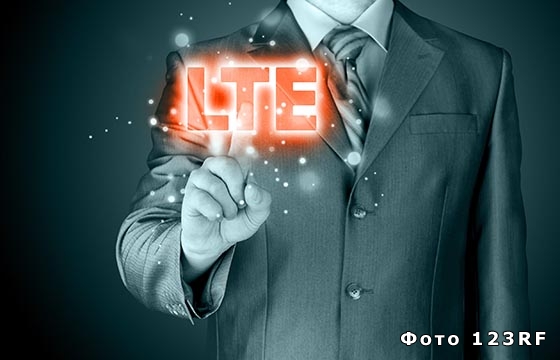
To do this, you need to buy that supports this technology. Since it is intended, first of all, to realize all the possibilities wireless internet, then the owners simple phones it is generally not needed.
If your smartphone has LTE support, you will be able to use this network, which provides much better communication services. To connect, you need a special SIM card that provides the ability to use the LTE network. So far, not all telecom operators can offer it, and it has not been implemented throughout our country.
LTE provides high speed exchange of information packets, reaching 10 Mbit per second or even higher. Thanks to this, operators can provide wireless Internet services with high quality and at a significantly lower price.
Users of the LTE network from their smartphone get the opportunity of unlimited access to multimedia Internet content, online games, Internet TV, Internet telephony, video communications, and all this in a quality similar to wired Internet.
iPhones of the latest generations, starting with 5C and 5S, have the ability to work in LTE networks. However, at first in software a restriction was built in to prevent them from connecting to Russian networks.
Only after the Russian operators directly entered the Apple guide, the case moved off the ground. Today, Beeline and Megafon subscribers have received the opportunity to connect iPhones to their LTE network. ![]()
It is quite possible that soon other Russian telecom operators, including regional ones, will implement the connection of iPhones to their LTE networks. In the Beeline network, for example, the data exchange speed is an impressive more than 50 Mbps.
Wireless communication standards are defined by an authoritative organization - the International Telecommunication Union. In 2008, it adopted the standards for a new generation of 4G communications. According to them, the network bandwidth should be 100 Mbps for moving devices and 1 Gbps for stationary ones.
LTE networks do not fully comply with these requirements (except for LTE-Advanced), so they are, strictly speaking, not 4th generation networks (4Generation, or 4G). Nevertheless, today it is the most modern high-speed wireless communication standard, massively implemented not only in our country, but also in many countries of Europe and the world.
In relation to 3G, the LTE wireless communication standard is much better and faster. It provides about 10 times the speed of data exchange, which, of course, provides more comfort for users. 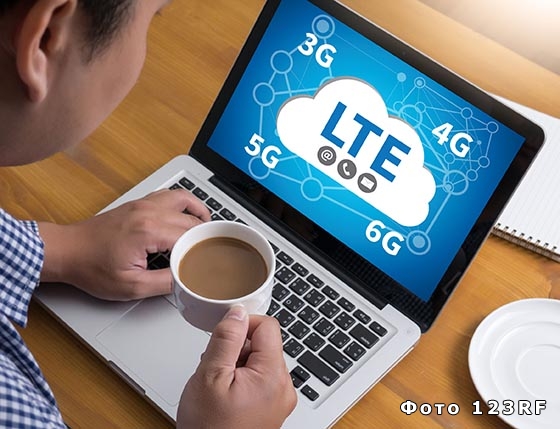
The most advanced version of this standard, LTE-Advanced, is already a full-fledged 4G network, but regular LTE is head and shoulders above the capabilities of 3G.
The LTE network was recently approved by the 3GPP consortium. By using such an air interface, it is possible to obtain a network with unprecedented performance in terms of maximum data transfer rate, packet forwarding delay, and spectral efficiency. The authors say that the launch of the LTE network allows more flexible use of the radio spectrum, multi-antenna technology, channel adaptation, scheduling mechanisms, organization of data retransmission and power control.
background
Mobile broadband, which is based on HSPA high-speed packet data technology, has already become quite widely accepted by users. cellular networks. However, it is necessary to further improve their service, for example, using an increase in the speed of data transmission, minimization of the delay time, as well as an increase in the overall network capacity, as user requirements for such communication services are constantly increasing. It was for this purpose that the specification of the HSPA Evolution and LTE radio interfaces was made by the 3GPP consortium.
Main differences from earlier versions
The LTE standard network differs from the previously developed 3G system in improved technical characteristics, including the maximum speed at which information is transmitted - more than 300 megabits per second, the packet forwarding delay does not exceed 10 milliseconds, and the spectral efficiency has become much higher. The construction of LTE networks can be carried out both in new frequency bands and in those already available to operators.
This radio interface is positioned as a solution to which operators will gradually switch from the systems of standards that currently exist, these are 3GPP and 3GPP2. And the development of this interface is a rather important step towards the formation of the IMT-Advanced 4G network standard, that is, a new generation. In fact, the LTE specification already contains most of the features that were originally intended for 4G systems.
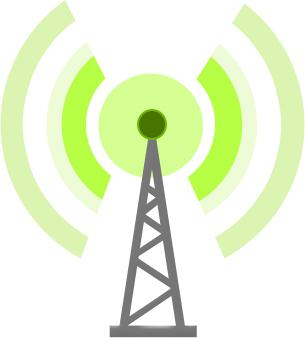
The principle of organizing the radio interface
Radio communication has a characteristic feature, which is that the quality of the radio channel is not constant in time and space, but depends on the frequency. Here it is necessary to say that the communication parameters change relatively quickly as a result of the multipath propagation of radio waves. In order to maintain a constant information exchange rate over the radio channel, a number of methods are usually used to minimize such changes, namely, various transmission diversity methods. At the same time, in the process of transmitting information packets, users cannot always notice short-term fluctuations in the bit rate. The LTE network mode assumes as a basic principle of radio access not to reduce, but to apply rapid changes in the quality of the radio channel in order to ensure the most efficient use of the radio resources available at any given time. This is implemented in the frequency and time domains through OFDM radio access technology.
LTE network device
What kind of system it is can only be understood by understanding how it is organized. It is based on the conventional OFDM technology, which involves several narrowband subcarriers. The use of the latter in combination with a cyclic prefix makes it possible to make communication based on OFDM resistant to time dispersions of the radio channel parameters, and also makes it possible to practically eliminate the need to use complex equalizers on the receiving side. This circumstance turns out to be very useful for organizing a downlink, since in this case it is possible to simplify the processing of signals by the receiver at the main frequency, which makes it possible to reduce the cost of the terminal device itself, as well as the power consumed by it. And this becomes especially important in the case of using the 4G LTE network along with transmission in multi-stream mode.
The uplink, where the radiated power is significantly lower than in the downlink, requires the mandatory inclusion of an energy-efficient method of information transmission in order to increase the coverage area, reduce the receiving device, and also its cost. The conducted studies have led to the fact that now for the uplink LTE, a single-frequency technology for broadcasting information in the form of OFDM with a dispersion corresponding to the discrete law is used. design of terminal devices.
The basic resource used in the transmission of information in accordance with the ODFM technology can be shown as a time-frequency network, which corresponds to the OFDM symbol set, and subcarriers in the time and frequency domains. The LTE network mode assumes that two resource blocks are used here as the main element of data transmission, which correspond to a frequency band of 180 kilohertz and a time interval of one millisecond. A wide range of data rates can be realized by pooling frequency resources, adjusting communication parameters including code rate and modulation order selection.
![]()
Specifications
If we consider LTE networks, what it is, it will become clear after certain explanations. In order to achieve the high targets that are set for the radio interface of such a network, its developers have organized a number of enough important points and functionality. In the following, each of them will be described with a detailed indication of how they affect such important indicators as network capacity, radio coverage, delay time and data transfer rate.
Flexibility in the use of the radio spectrum
Legislative norms that are in force in a particular geographical region affect how mobile communications will be organized. That is, they prescribe the radio spectrum allocated in different frequency ranges by unpaired or paired bands of different widths. Flexibility of use is one of the most important advantages of the LTE radio spectrum, which allows it to be used in different situations. The architecture of the LTE network allows not only to work in different frequency bands, but also to use frequency bands with different widths: from 1.25 to 20 megahertz. In addition, such a system can operate in unpaired and paired frequency bands, supporting time and frequency duplex, respectively.
If we talk about terminal devices, then when using paired frequency bands, the device can operate in full duplex or half duplex mode. The second mode, in which the terminal receives and transmits data at different times and at different frequencies, is attractive in that it significantly reduces the requirements for the characteristics of the duplex filter. Thanks to this, it is possible to reduce the cost of terminal devices. In addition, it becomes possible to introduce paired frequency bands with low duplex spacing. It turns out that LTE mobile communication networks can be organized in almost any distribution of the frequency spectrum.
The only challenge in developing a radio access technology that allows for flexible use of the radio spectrum is to make communication devices compatible. To this end, the LTE technology implements an identical frame structure in the case of using frequency bands of different widths and different duplex modes.
Multi-antenna data broadcast
The use of multi-antenna broadcasting in mobile communication systems can improve their specifications, as well as expand their capabilities in terms of subscription services. LTE network coverage involves the use of two methods of multi-antenna transmission: diversity and multi-stream, as a special case of which is the formation of a narrow radio beam. Diversity information can be thought of as a way to equalize the level of the signal that comes from two antennas, which allows you to eliminate deep dips in the level of signals that are received from each antenna separately.
You can take a closer look at the LTE network: what is it and how does it use all these modes? Transmission diversity here is based on the method of space-frequency coding of data blocks, which is supplemented by time diversity with a frequency shift when using four antennas simultaneously. Diversity is usually used on shared downlinks where the scheduling function cannot be applied depending on the state it is in. Diversity can be used to send user data, such as VoIP traffic, for example. Due to the relatively low intensity of such traffic, the additional overhead that is associated with the scheduling function mentioned earlier cannot be justified. Due to data diversity, it is possible to increase the radius of cells and the capacity of the network.
Multistream transmission for simultaneous transmission of a number of information streams over one radio channel involves the use of several receiving and transmitting antennas located in the terminal device and the base network station, respectively. This significantly increases the maximum speed of data transmission. For example, if the terminal device is equipped with four antennas and this number is available on base station, then it is quite realistic to simultaneously transmit up to four data streams over one radio channel, which actually makes it possible to make its bandwidth four times larger.
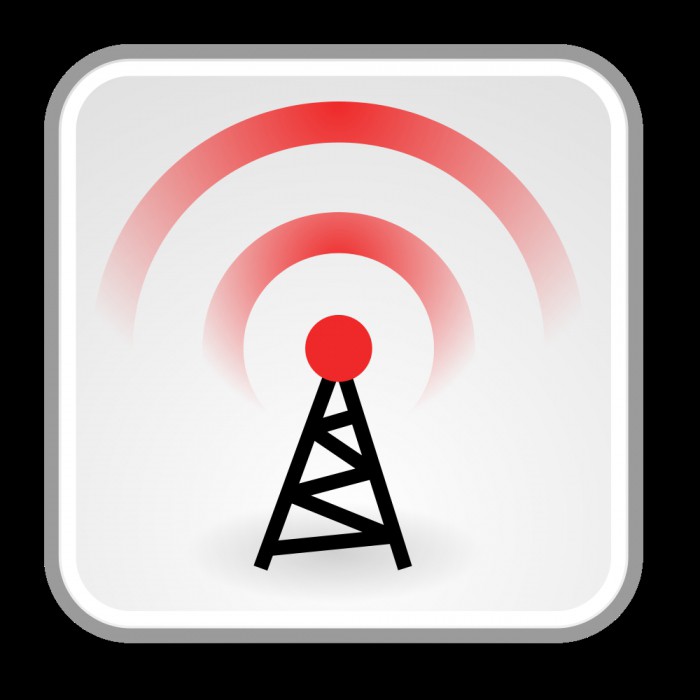 If you use a network with a small workload or small cells, then thanks to multi-streaming, you can achieve a sufficiently high throughput for radio channels, as well as efficiently use radio resources. If there are large cells and a high degree of load, the channel quality will not allow multistream transmission. In such a case, the signal quality can be improved by using multiple transmit antennas to form a narrow beam for transmitting data in a single stream.
If you use a network with a small workload or small cells, then thanks to multi-streaming, you can achieve a sufficiently high throughput for radio channels, as well as efficiently use radio resources. If there are large cells and a high degree of load, the channel quality will not allow multistream transmission. In such a case, the signal quality can be improved by using multiple transmit antennas to form a narrow beam for transmitting data in a single stream.
If we consider the LTE network - what this gives it to achieve greater efficiency - then it should be concluded that for high-quality work under various operating conditions, this technology implements adaptive multi-stream transmission, which allows you to constantly adjust the number of streams transmitted simultaneously, in accordance with the constantly changing the state of the communication channel. With good channel conditions, up to four data streams can be transmitted simultaneously, achieving transmission rates of up to 300 megabits per second with a bandwidth of 20 megahertz.
If the channel state is not so favorable, then fewer streams are transmitted. In this situation, antennas can be used to form a narrow beam, improving the overall reception quality, which ultimately leads to an increase in system capacity and an extension of the service area. In order to provide extensive radio coverage areas or data transmission at high speed, it is possible to transmit a single data stream with a narrow beam or use data diversity on common channels.
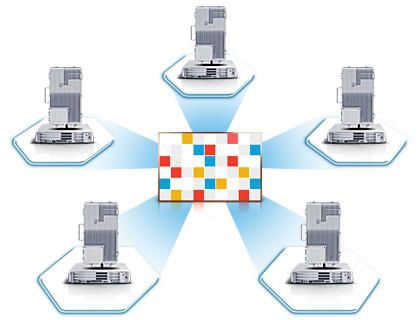 Communication channel adaptation and scheduling mechanism
Communication channel adaptation and scheduling mechanism
The principle of operation of LTE networks assumes that scheduling will mean the distribution of network resources between users for data transmission. This provides for dynamic scheduling in the downstream and upstream channels. LTE networks in Russia are currently configured in such a way as to balance communication channels and overall performance the entire system.
The LTE air interface assumes the implementation of the scheduling function depending on the state of the communication channel. It provides data transmission at high speeds, which is achieved through the use of high-order modulation, the transmission of additional information streams, a decrease in the degree of channel coding, and a decrease in the number of retransmissions. For this, frequency and time resources are used, which are characterized by relatively good communication conditions. It turns out that the transfer of any particular amount of data is carried out in a shorter period of time.
LTE networks in Russia, as well as in other countries, are built in such a way that the traffic of services that are busy forwarding packets with a small payload after the same time intervals may necessitate an increase in the amount of signaling traffic that is required for dynamic scheduling. It may even exceed the amount of information broadcast by the user. That is why there is such a thing as static scheduling of the LTE network. What this is, it will become clear if we say that the user is allocated a radio frequency resource designed to transmit a certain number of subframes.
Thanks to adaptation mechanisms, it is possible to “squeeze everything possible” out of a channel with dynamic communication quality. It allows you to select a channel coding and modulation scheme in accordance with the communication conditions characterized by LTE networks. What this is, it will become clear if we say that its work affects the speed of data transmission, as well as the likelihood of any errors in the channel.
Uplink power and regulation
This aspect concerns the control of the power level emitted by the terminals in order to increase the network capacity, improve the quality of communication, make the radio coverage area larger, and reduce power consumption. To achieve these goals, power control mechanisms strive to maximize the level of a useful incoming signal while reducing radio interference.
The LTE networks of Beeline and other operators assume that the uplink signals remain orthogonal, that is, there should be no mutual radio interference between users of the same cell, at least for ideal communication conditions. The level of interference that is created by users of neighboring cells depends on where the emitting terminal is located, that is, on how its signal attenuates on the way to the cell. The Megafon LTE network is arranged in exactly the same way. It would be correct to say this: the closer the terminal is to a neighboring cell, the higher will be the level of interference that it creates in it. Terminals that are further away from a neighboring cell are capable of transmitting higher signal strengths than terminals that are in close proximity to it.
Due to the orthogonality of the signals, in the uplink it is possible to multiplex signals from terminals of different strengths in the same channel on the same cell. This means that there is no need to compensate for signal level spikes that occur due to multipath propagation of radio waves, but they can be used to increase the speed of data transmission using adaptation mechanisms and scheduling of communication channels.
Data relay
Almost any communication system, and LTE networks in Ukraine are no exception, from time to time makes errors in the process of data transfer, for example, due to signal fading, interference or noise. Error protection is provided by methods of retransmission of lost or corrupted pieces of information designed to ensure that High Quality connections. The radio resource is used much more rationally if the data relay protocol is organized efficiently. In order to make the most of the high speed air interface, LTE technology has a dynamically efficient two-layer data relay system that implements Hybrid ARQ. It is characterized by a small overhead required to ensure feedback and retransmission of data, supplemented by a high reliability selective retry protocol.
![]() The HARQ protocol provides the receiving device with redundant information, enabling it to correct any specific errors. Retransmission via the HARQ protocol leads to the formation of additional information redundancy, which may be required when retransmission was not enough to eliminate errors. Packets that have not been corrected by the HARQ protocol are relayed using the ARQ protocol. LTE networks on the iPhone work in accordance with the principles described above.
The HARQ protocol provides the receiving device with redundant information, enabling it to correct any specific errors. Retransmission via the HARQ protocol leads to the formation of additional information redundancy, which may be required when retransmission was not enough to eliminate errors. Packets that have not been corrected by the HARQ protocol are relayed using the ARQ protocol. LTE networks on the iPhone work in accordance with the principles described above.
This solution allows to guarantee the minimum delay of packet translation with low overhead, while the reliability of communication is guaranteed. The HARQ protocol allows you to detect and correct most of the errors, which leads to a rather rare use of the ARQ protocol, since it is associated with considerable overhead, as well as an increase in the delay time during packet translation.
It is an end node that supports both of these protocols, providing a tight connection between the layers of these two protocols. Among the various advantages of such an architecture are the high speed of eliminating errors that remained after the operation of HARQ, as well as the adjustable amount of information transmitted through the use of the ARQ protocol.
The LTE air interface has high performance due to its main components. The flexibility of using the radio spectrum allows you to use this radio interface with any available frequency resource. LTE technology provides a number of features that enable efficient use of rapidly changing communication conditions. Depending on the state of the channel, the scheduling function gives the best resources to the users. The use of multi-antenna technologies leads to a decrease in signal fading, and with the help of channel adaptation mechanisms, it is possible to use signal coding and modulation methods that guarantee, under specific conditions, optimal quality connections.
Technology moves too fast to keep up with everything. It is enough to relax your attention to the market of technological innovations for a year and nothing is clear about LTE, what is it in the phone and why is it constantly being discussed? But if you do not go into technical details, it is not difficult to understand this issue, you just need to delve into it.
Why is data transfer speed important?
Data transfer has always been a priority for mankind:
- From generation to generation. This made it possible to save as much useful information for future generations, advance scientific and technological progress.
- Over great distances. Once upon a time, it took months and even years to convey the news a thousand kilometers away. Today it can be done in one second.
- Between individuals and large organizations. Misunderstandings often led to disastrous consequences.
- For scientific experiments and the development of something fundamentally new. Now people operate with too massive blocks of information.
In many ways, the future of humanity depends on the ability to share information. The more data that is freely available, and the easier it can be transferred from person to person, the faster progress will develop. Many of the obstacles that still fetter science will disappear, it will be possible not to wait for publications and interesting results for months, as happened in the past.
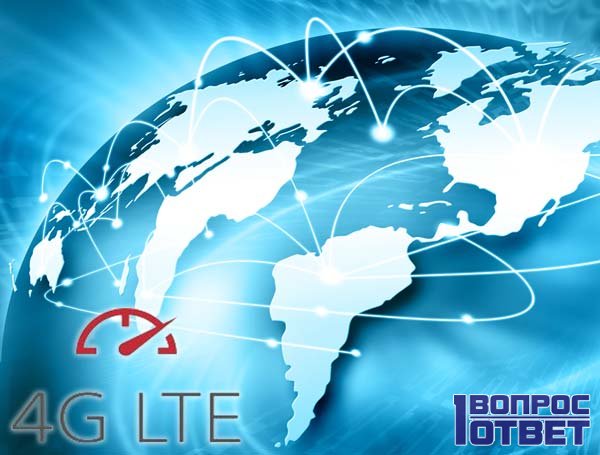
What is LTE in a smartphone?
High standards in terms of data transmission are also set for ordinary users mobile devices:
- In 2010, the full introduction of the 3G format began, which provides for a bandwidth of 100 Mbps.
- Today, in most major cities of our country, this format is actively used by mobile operators.
- In fact, the speed very rarely reaches the cherished 100, more often limited to 8-16 Mbps.
- Relatively recently, new standards have been developed, called 4G, providing for a 10-fold increase in bandwidth compared to the previous format.
- In order to gradually switch to 4G, it was decided to start with a smooth transition to the LTE format. In fact, this option is able to provide not purely theoretical, but quite real 100Mbit.
To comply with the standards, mobile device manufacturers have begun to include support for the LTE format in their devices. In fact, this is the next step between 3G and 4G, which is designed to reduce the load on wireless networks and allow you to step into the future.
This kind wireless transmission data in the next few years should become the main format for any smartphone or tablet.
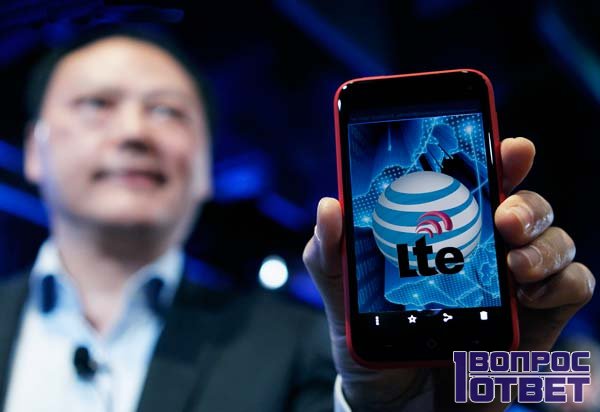
How is 4G different from LTE?
From a marketing point of view, very useful to compareLTE to 4G. After all, many have already heard about the fourth generation of communication. Everyone really expects 1Gbps transmission. But in the coming years, one can not even dream of such a speed, especially in small cities on the periphery. But with LTE they will begin to “contact” earlier, but the format needs to enlist at least some kind of advertising support.
In fact, hopes can be shattered by harsh reality:
- LTE cannot be fully considered a 4G format.
- It does not meet all the standards of the fourth generation.
- In fact, in most regions, the speed will be limited to 100 Mbps, which is 10 times lower than the initial expectations.
- The bandwidth of the LTE format is growing every day, while 4G exists only in theory and on paper.
- The imperfection of the technical infrastructure does not allow to immediately and massively move to the fourth generation, you have to use the predecessors. One of them is LTE.
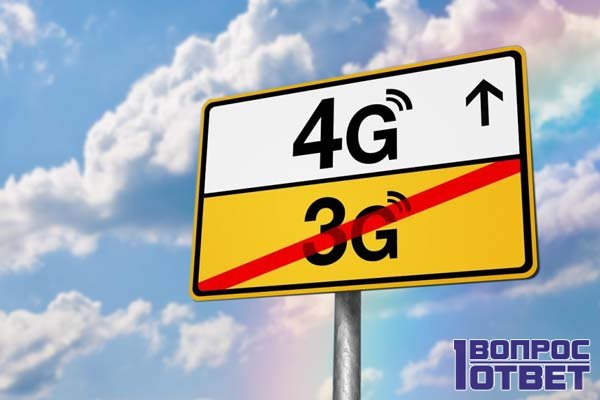
FDD LTE - what is it?
In terms of stream encoding, there are two LTE formats, the most advanced of them is FDD. The fact is that when connecting to the network, we are interested not only in the download speed, but also in the upload speed of the material:
- When downloading a file or watching a video, we use one of two streams - Download.
- When uploading data to the server, sharing information and giving access to our device, we use a different stream - Upload.
For an ordinary user, the return has practically no value, but it all depends on the tasks set for oneself. In any case, the two streams of incoming and outgoing information must be encoded in some way so as not to "cross" and "not interfere" with each other. In FDD format this the issue is solved by using different frequencies This saves time and power.
When using TDD, the data is divided already in time. Precisely for high speed internet this is not the best option, as you might have guessed. A third format is currently being developed, capable of simultaneously separating both in time and in frequency. Theoretically, this approach should save even more time while maintaining maximum power.
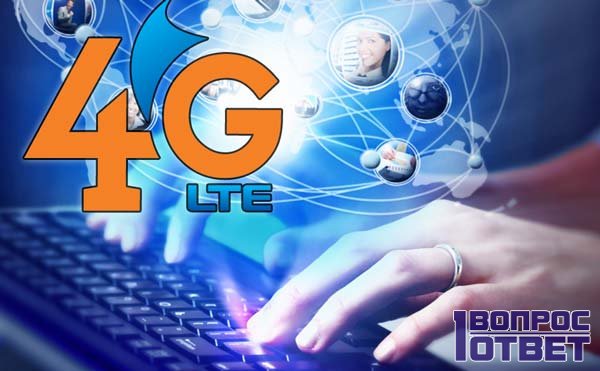
How to choose the right mobile internet speed?
It's too easy to get confused in all the numbers and abbreviations. Ultimately, they were developed by engineers for internal use. Each owner of a smartphone does not have to drive numbers, concepts and other data into his head. Enough:
- Decide on the purposes for which the mobile device will be used.
- Test speed with a dot and determine what speed is needed for given goals.
- Choose a tariff plan from the operator, with suitable “numbers”.
- Do not overpay for "extra" bandwidth that will never be needed.
It is always a pleasure to read about the development of wireless data transmission and think about the future. But for normal speed, a full-fledged infrastructure is needed, in this regard, not all operators can boast of having the necessary equipment in the proper amount.
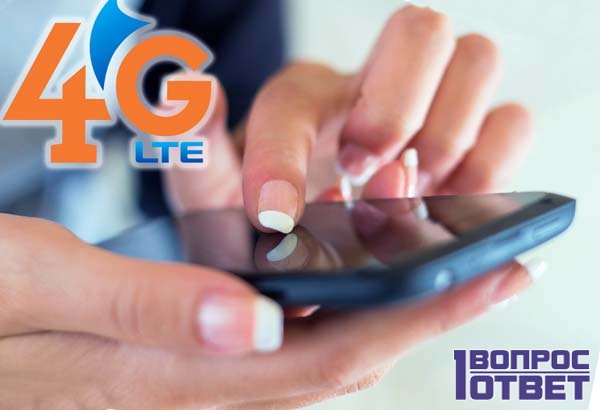
Why is LTE needed?
Now almost every new phone model will support LTE:
- This is a data transmission format, wireless transmission.
- It is a stepping stone between 3G and 4G.
- In theory the new kind should provide 100 Mbps.
- The format is absolutely harmless to health, in terms of radiation and all that.
By and large, this is the new speed standard, which will be achieved through the improvement of the mobile devices themselves and the modernization of the networks themselves. If everything is clear with smartphone manufacturers, they do not stint on new technologies, then there may be problems with the infrastructure in some regions. But it's still too early to talk about it.
LTE will stay on the market for only a couple of years, it will be replaced by 4G. Well, this is under the most optimistic scenarios. In fact, we know that there is nothing more permanent than "for a couple of years."
A real step forward is LTE, what almost every fan of the mobile Internet now knows what it is in a phone. The nice thing is that from the theory of implementation high standards we've moved on to practice.
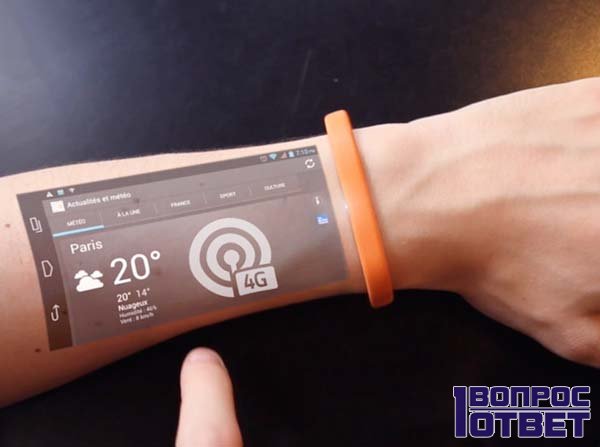
Video about LTE technology
In this video, Anton, as part of the Knowledge Base program, will tell you what is LTE? Why is it needed in the phone and even different from 3G:
The terms LTE and 4G have been around for a long time and are gradually becoming part of the vocabulary modern man, and with the advent of a new generation of Android smartphones and the release of the iPhone 5, we just need to know more about this technology, just so that there is no confusion, and for general development.
In this article we will try to give the most simple answers to the most popular questions about LTE.
What is LTE?
Developed by the 3GPP Long Term Evolution consortium (literally, “long-term development”), in the generally accepted abbreviated version - LTE is a new standard mobile networks with increased bandwidth and data transfer speed. LTE uses different frequencies, but operates on the basis of the GSM / HSPA networks used, in fact, being an improved version of them. The term 4G, or " wireless connection fourth generation" is used as a synonym for LTE, emphasizing the differences between this standard and 3G. According to preliminary forecasts, by 2016 the total number of mobile broadband subscribers may reach 5 billion people.
How is LTE (4G) different from 3G
First of all, you need to understand that 4G LTE is an evolutionary, not a revolutionary development path that involves using the capabilities of the existing one. 3G networks will continue to deliver broadband services to billions of mobile device users for a long time to come. But 4G, nevertheless, confidently predicts the role of the generally accepted standard for mobile communications in view of a number of obvious advantages of 4G LTE technology, the main of which are:
- higher performance and throughput;
- Simplicity—LTE supports flexible bandwidth options with carrier frequencies from 1.4 MHz to 20 MHz, as well as frequency division duplex (FDD) and time division duplex (TDD).
- delay - in LTE, there is a significantly lower delay in data transmission for user plane protocols in comparison with existing third-generation technologies (an advantage that is extremely important, for example, for multi-user service).
- a wide range of end devices — LTE modules are planned to equip not only smartphones and tablets, but also laptops, game consoles, camcorders and other portable and household devices.
LTE speed
The capabilities of LTE technology provide for data transfer rates up to 299.6 Mbps for download (download) and up to 75.4 Mbps for upload. However, in LTE, the speed in each case largely depends on both the user's location and the current network load. But LTE is developing: two years ago at MWC-2010, a possible peak bandwidth of up to 1.2 Gbit per second was demonstrated. However, in Singapore, for example, where the national LTE coverage is provided by the M1 operator, the average download speed in LTE does not exceed 75 Mbps. In the near future, the company is going to increase the speed to 150 Mbps by using the frequencies that are currently used to support the outdated 2G standard.
Why are LTE frequencies different in different countries?
Despite the fact that LTE is developing very actively all over the world, there is no single frequency range on which 4G operators operate in different countries peace. This is due to the fact that the radio frequency spectrum in many states is under the control of government structures, and the activities of operators are licensed. In different countries certain frequencies are already being used by other services (like digital TV), so telcos have to use those that are currently available and wait to be able to access new bands, as is the case with Singapore's M1.
Most commonly used LTE frequencies
In Asian countries, this is 1800 MHz or 2600 MHz. It is on these frequencies that operators in Singapore, Hong Kong and South Korea operate. In Japan and the USA - 700 MHz or 2100 MHz. In Europe - 1800 MHz or 2600 MHz.
In Russia, LTE licenses were obtained by Rostelecom (791-798.5 / 832-839.5 MHz, Band 20), MTS (798.5-806 / 839.5-847 MHz, Band 20), Megafon (806-813.5 / 847 -854.5 MHz, Band 20) and VimpelCom (" ") (813.5-821 / 854.5-862 MHz, Band 20), which will start providing 4G LTE services from July next year.
In Ukraine, LTE networks are just beginning to develop, and, according to experts, it will take at least a year and a half before the start of its full-fledged commercial operation. The reasons for this lag are problems with regulation and licensing, as well as insufficient capacity of the transport network.
Universal LTE-smartphone?
There is no such device yet, since manufacturers have not yet developed such a compact antenna that could provide signal reception and transmission at least at the most popular LTE frequencies at the same time. That's why they say that bought in the States may not work in Asian and European LTE networks. But it’s not worth getting especially upset, there always remains a universal one, available in all countries of the world. However, if we take into account the global trend towards the shift of telecom operators towards the LTE standard and the rate of release of previously occupied frequency bands, then in the future we can expect the emergence of a common frequency band in different countries and regions of the world. This means that the problem of developing a universal LTE smartphone can be somewhat simplified and its creation is only a matter of time. Let's hope this happens very soon.
4G LTE is expensive
Like the 3G standard in its time, the new 4G is also not yet democratic in tariff setting. Cheap 4G LTE is not offered yet, so users have to pay more for speed and performance. However, LTE becomes truly expensive if you do not pay attention to the amount of data downloaded or transmitted.
LTE smartphones on sale
In addition to the mentioned iPhone 5, which Apple will start selling on September 21 this year, several more smartphones can work with LTE networks: HTC One XL, samsung galaxy S II LTE, LG Optimus True HD LTE and the Galaxy Note LTE. The LG Optimus G and Galaxy S3 LTE are also expected to be on sale soon.
LTE technology news
In our country, the 4G LTE standard is still only a prospect, and not the closest. However, for those who often travel abroad, there are plenty of opportunities to experience the full benefits of LTE. On the rise in popularity this standard connection is also indicated by the fact that new iPhone 5 from Apple is released in three various options, each of which is designed for a specific range of LTE frequencies. For example, the A1428 (GSM) iPhone 5 only supports LTE in the US and Canada and operates at 700MHz. Model A1429 (CDMA) is focused on the networks of the US operators Sprint and Verizon, as well as the Japanese KDDI.
And, finally, A1429 (GSM) iPhone 5 operates on 850 MHz, 1800 MHz and 2100 MHz frequencies and is the most versatile, since these frequencies are used for LTE communication in many countries of the world (except for the USA and Canada). The Apple support site states that the A1429 (GSM) is LTE compatible in Australia, Hong Kong, Germany, Korea, Japan, Singapore, and the UK. In other words, this means that if you live in Ukraine and often visit Europe, then when ordering an iPhone 5 from other countries, choose A1429 (GSM). Accordingly, those who visit the United States more often should buy A1428 (GSM) iPhone 5. Also, do not forget that such a regional distinction applies only to LTE-specific devices, in 3G networks each of them will work in any region of the planet.
Samsung may acquire Nokia Siemens Networks(August 3, 2012)
The South Korean corporation Samsung is studying the possibility of acquiring one of the largest manufacturers of universal equipment for communication networks NSN. According to independent analysts and experts, the amount of this deal could reach fifty-five billion dollars. An NSN spokesperson stated that the interest of Samsung's management relates to the bulk supply and global production of equipment for unique wireless networks mobile communications.
It should be recalled that today there are not so many mobile companies in the world capable of making this purchase, and on the international market of operator equipment, only Ericsson or Huawei corporations could afford such an asset. However, such a financial deal does not fit into Ericsson's strategic policy, and the second corporation already has a similar infrastructure. It should be mentioned that a Chinese corporation is being considered as a potential buyer of NSN. As for South Korean manufacturer mobile equipment, Samsung used to produce branded stations for the WiMAX model, but this service has lost its leading position to the innovative LTE technology.

